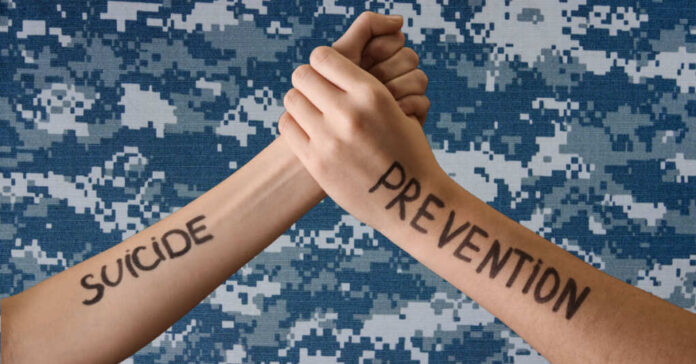
Despite frequent grandstanding by the top brass, the Navy has failed to implement a proper suicide prevention program, and shipmates are checking themselves out at an unprecedented rate.
Per a Naval service audit conducted in January, numerous commands were unable to substantiate their numbers and guarantee their leaders had complotted the requisite training. Because of this, they are unable to verify that sailors can protect themselves and those serving to their left and right who may need that help. While the Navy claimed on May 22nd that they had addressed the January report, statements from anonymous sailors report the contrary.
In another report focusing on data from 2021, auditors discovered that the Navy’s 21st Century Sailor Office, internally referred to as N17 failed to take notice of warning signs of suicidal-related behaviors (SRB), and behavior patterns that would indicate suicide is a very strong potential. Various commands also failed to have plans in place to respond to those in need nor did they conduct drills to respond to those situations as Naval policy dictates.
“Without a process for tracing the full details of all SRBs, the Navy cannot provide enterprise-wide SRB surveillance to proactively mobilize resources to prevent a crisis,” said writers of the audit. “In addition, the Navy is unable to analyze SRBs as required.” It also stated that the 21st Century Sailor Office failed at monitoring suicidal behaviors and “lacked the necessary management oversight and internal controls for verifying annual training completion.”
Overall, 60% of the 238 suicide attempts in the Navy occurred in commands that failed to submit full information on their stats. Thus, making it even harder for the Navy to analyze its trends and what was making suicide attempts so prevalent in its ranks. Clusters in specific units like the Mid-Atlantic Regional Maintenance Center and the USS George Washington have emerged as hotbeds for suicide in recent years. In both units, the audit investigators discovered similar trends of failing their sailors.
In four hand-picked commands, none of the leadership could fully complete and verify their training for 2021, which was a massive violation of policy for the Navy. This is a sign of failure amongst higher brass and the Navy’s internal controls system. Conducted from January 2022 to October, the audit focused on the FY 2021 data. During that time 59 sailors died by their own hand.
The audit has given the Navy multiple suggestions for fixing the problem, including new internal controls in the 21st Century Sailor Office, as well as better oversight of the SRB data collection and analysis. Additionally, they want annual suicide prevention training and crisis response plans. According to the audit “At a minimum, the policy would require collection of the name, date, and location of deaths by suicide, suicidal attempts, and suicidal ideations.”
Data like this is little more than a sign that the Navy still doesn’t get it.
Suicide attempts and those who complete their mission are a service-wide problem not just in the Navy, but in all branches. This is a no-fail mission, and yet commanders cannot see the facts despite them being on full display for them. Sailors much like servicemembers in other branches aren’t killing themselves because it’s the thing to do.
For far too long the brown-nosing officers have been rewarded with better evaluation reports, and better assignments, as their careers progressed. Incidents in their commands have been swept under rugs, underreported, and outright ignored under the guise of keeping the Navy pride intact and strong. This has meant that sailors have suffered from poor leadership that simply gets moved up or moved on. Rarely if ever are they moved out.
It’s these toxic leaders that are pushing sailors overboard and into waters that they cannot swim against by themselves. With a little help and listening to the lower enlisted, the Navy might stand a chance at fixing their problem. One of the biggest issues is the lack of pay. While Congress traditionally gives military raises yearly, it doesn’t keep up with inflation. As cherry officers are getting thousands a paycheck, enlisted (the most at risk) get hundreds. Fix that one problem alone, and you’ll see the suicide number improve.











